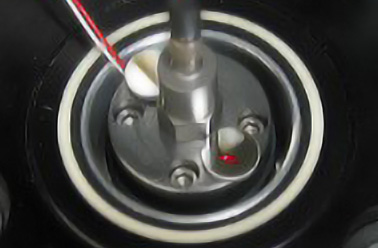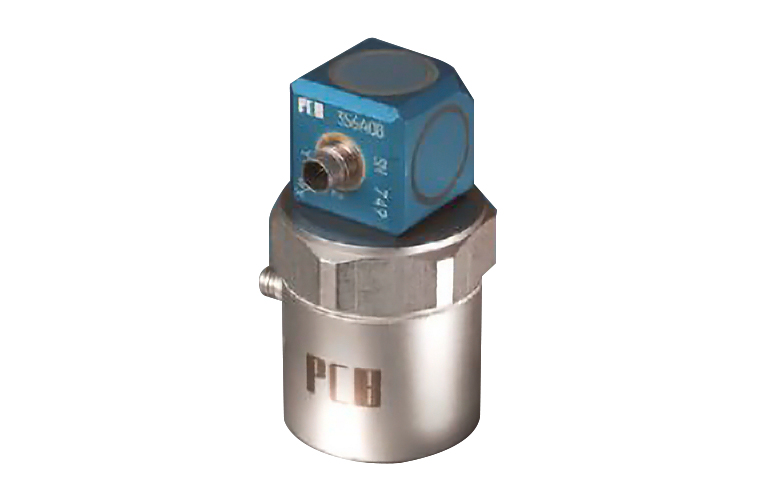Main Menu
- Home
- Product Finder
- Calibration Systems
- Calibration Services
- Digital Sensing
- Industrial Vibration Calibration
- Modal and Vibration Testing
- Non-Destructive Testing
- Sound & Vibration Rental Program
- Learn
- About Us
- Contact Us
 The question often asked is, “When (or even why) do I need primary calibration?” Metrologists are also curious to know, “What does it cost?” The short answer to “who needs it?" is that primary calibration
(as covered in ISO16063-11) is the standardized means to obtain the absolute minimum in uncertainty. But to fully answer this question, one needs to first consider the reasons for calibration. This discussion answers the question from
the angle of uncertainties, costs and throughput rates.
The question often asked is, “When (or even why) do I need primary calibration?” Metrologists are also curious to know, “What does it cost?” The short answer to “who needs it?" is that primary calibration
(as covered in ISO16063-11) is the standardized means to obtain the absolute minimum in uncertainty. But to fully answer this question, one needs to first consider the reasons for calibration. This discussion answers the question from
the angle of uncertainties, costs and throughput rates.
 When is primary calibration needed?
When is primary calibration needed?
Primary calibration most often takes a laser interferometer and provides an absolute calibration by comparing the dynamic vibration to the wavelength of the
laser light. This very high accuracy method of vibration measurement comparison provides calibrations with uncertainties in the 0.2 – 1.5% (k=2 for all uncertainties in this article) over the frequency range up to 15 kHz.
This type of accuracy is needed at national primary labs, or anywhere that accelerometer transfer standards (sometimes called reference standards) are created since the reference sensor uncertainty will be critical (actually the largest single component)
in the comparison calibration uncertainty. Transfer standards are often created in primary labs of the government, defense and large industrial users.
How much does primary calibration cost?
As for cost, a calibration grade laser interferometer setup can run between $150,000 to $200,000 making it justified for only a very small subset of accelerometer
users. Note, however, there has been recent progress in the laser calibration field that indicates a trend toward more economical lasers. For those lacking the capital or volume of sensors, yet still requiring primary calibration, laser
primary calibration service of a reference accelerometer is available in the $1,000 to $5,000 price range depending on vendor and number of traceable frequency points required.
Reference standard options and cost
Accelerometer calibration via reference (or transfer) standard is the most common calibration method for most typical accelerometer users. This is the method
used by virtually every accelerometer manufacturer to calibrate the sensors at the factory. The sensor under test (SUT) is mounted to a calibration exciter instrumented with a reference accelerometer that sees the same vibration as the
test sensor. The signals are compared to the reference thus providing the calibration constant for the test accelerometer. The method is quick, accurate and affordable. Depending on desired uncertainty and throughput, there are various
price points (and resulting return-on-investment points). At the entry level, manual calibration
systems can be purchased or integrated for around $10,000 (uncertainties typically 3-5% or greater) and are generally used for low numbers of axes of calibration. An automated calibration system with an acceptable electromechanical shaker runs
in the $30,000 to $40,000 range (uncertainties typically 2.5-3.5% worst case at <10 kHz) and have a 3-4 year ROI breakeven point at 100 axes of calibration per year. For large volume calibration users and metrology houses,
a fully automated, database driven calibration system with high accuracy calibration grade air-bearing exciter can run in the $40,000 to $50,000 price range (uncertainties typically 1.8 – 2.5% worst case at <10 kHz).
For those lacking capital or volume of sensors, typical calibration service can be obtained from many vendors or regional sources in the $85 – $150 per axis price range.
Regardless of automation, accuracy or price, one thing is paramount: confidence in your calibration system and the supporting vendor. If you have any questions about a calibration system, old or new, don’t hesitate to ask… we’re here to help.